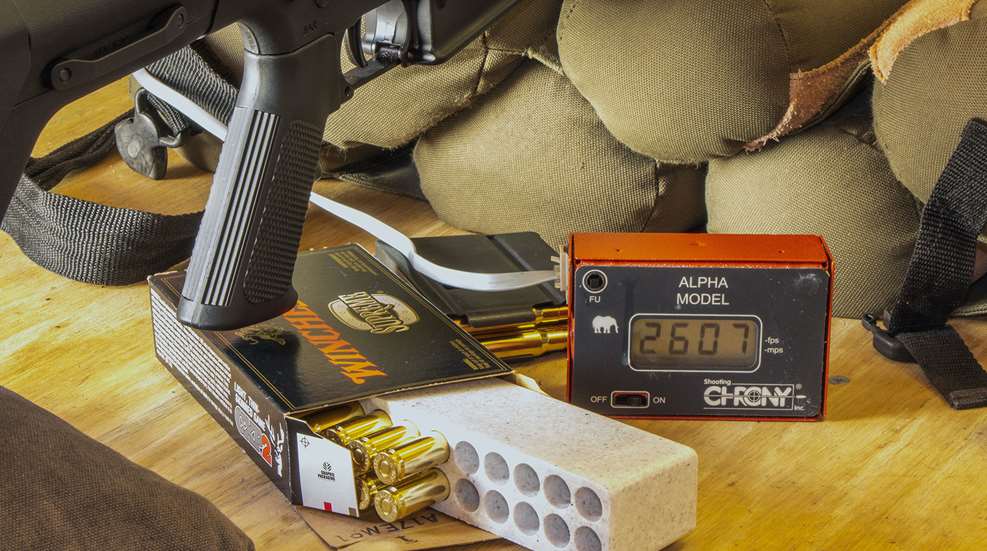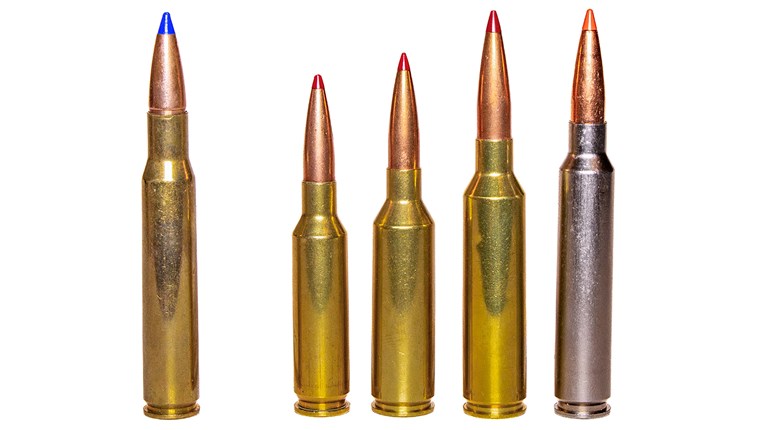
A chronograph is a valuable tool for a handloader or shooter, but only when it works as designed by providing consistent and accurate readings.
I’ve always been infatuated with ammunition, maybe more so than guns. This is partly because ammunition can drastically change how any firearm performs, and (obviously) without ammunition, our firearms are worthless. Because of this addiction to understanding, I’ve conducted a lot of ammunition testing on my own and with ballisticians. My interest in ammo is one of the reasons I was selected to write this column more than 10 years ago. But, I’ll admit I’m a long way from knowing it all.
Mike Cyrus has a passion for cartridge development and has been responsible for the creation of several wildcat cartridges. His work impressed Lehigh Defense so much the company hired him to conduct research and development. He’s a smart guy, and after Wilson Combat acquired Lehigh Defense, Cyrus has continued to work in that capacity. He and I were recently discussing ammunition manufacture and testing, and I thought some of the lessons he’s learned through the years ought to be shared.
Cyrus told me one of the most helpful tools he uses when developing loads is a powder-burn-rate chart. A burn-rate chart not only shows you a comparison of powders based on how fast they burn, but it also allows you to see powders that produce similar burn rates. He said this is extremely helpful when he’s testing new bullets, and also when working with cartridges—new or wildcat—for which there is very little or no load data.
Just because powders are listed as having similar burn rates does not mean you can interchange the load data. You should always seek out applicable verified and published data, or contact powder manufacturers for guidance when coloring outside the lines!
I’d have to agree. Back in 2015, when I was developing loads for my 2Fity-Hillbilly wildcat cartridge (a 6.5 Creedmoor necked down to .257), I knew that IMR 4064 and IMR 4350 worked well for loading the 6.5 Creedmoor. A burn-rate chart told me that IMR 4451, IMR 4166 and CFE 223 fell within that burn-rate range. Comparing with 6.5 Creedmoor loads and some careful extrapolation and consultation, I was able to develop good-performing loads with all three powders.
WARNING: Just because powders are listed as having similar burn rates does not mean you can interchange the load data. You should always seek out applicable verified and published data, or contact powder manufacturers for guidance when coloring outside the lines!
Back before reliable reloading data was widely available online from companies like Hodgdon and Western Powders, shooters used to share data like bakers shared secret recipes for rhubarb pie. When I began handloading, you’d often hear questions like, “What’s the best powder for the .308 Win.?” Cyrus said he used to think there were best powders for individual cartridges. However, through his work with Keith Anderson at Western Powders, Cyrus said he learned it was much more complicated.
Cyrus said, “The .308 Win. cartridge is a perfect example, particularly when comparing the best powders for light- versus heavy-bullet loads. But, it also comes into play when discussing barrel length. I’ve found Accurate 2230 to most always be a good powder with lightweight bullets in 16-inch-barreled .308 Win. carbines. However, Accurate 2520 is a better choice with heavier .308 Win. bullets, especially out of a 24-inch barrel.”
There’s a clue to this powder preference for the .308 Win. that can be found simply by going to the Hodgdon website. Just compare the Accurate powders listed for 130- and 180-grain bullets. Accurate Powder 2520 is not even listed for light bullets, while 2230 is not listed for heavy bullets. Even within individual rifle cartridges, there is rarely a one-powder answer for all bullet weights and barrel lengths.
We all assume that the longer the barrel, the faster the velocity. This is a good rule of thumb, but it’s not an absolute. Mike said he once bought a Kahr .40 S&W with a 3.6-inch barrel to help with the development of short-barrel .40 S&W loads using bullets from Lehigh Defense. The problem was the Kahr delivered higher velocities than his Glock G22 with its 4.5-inch barrel.
This is not that uncommon, because velocity is a product of pressure, which is partly determined by the true—as opposed to the caliber designation—bore diameter, the rifling type and the rifling configuration. I’ve seen this numerous times with handguns, and it’s especially true with .22 LR ammo, particularly when fired in rifles. Most .22 LR loads will deliver their highest velocities in barrels of about 16 inches, and you’re apt to see a wide variance in .22 LR velocities out of guns with the same-length barrel.
Magnum primers are supposed to be hotter than standard primers, and because of this they’re often suggested for use with cartridges that use slower-burning powders and that have a large case capacity, like the 30 Nosler or .300 Win. Mag. But, Cyrus has found that when working with ball powders like BL-C2, magnum primers—small or large—can deliver more consistent performance, especially when it’s cold.
This is important because some handloaders like to use ball powders because they meter more consistently, which makes the handloading process easier. However, if you cannot find verified, published-load data for a magnum primer and the ball powder you want to use, simply reduce the charge weight by 10 percent and work up—slowly and cautiously—as you would when changing any other component in the load.
One of the last things Cyrus and I discussed were chronographs. When testing ammunition, it’s the best tool shooters have at their disposal. Velocity readings are your insight into pressure, performance and safety. The problem is that chronographs are not as accurate as tape measures; results not only vary from chronograph to chronograph, but light intensity can influence chronograph readings.
Five years ago, I conducted a chronograph test and compared the results from three chronographs, stacked end to end. Their averages were 2,039, 2,011 and 2,001 fps. I also conducted the same test in bright sunlight and during cloudy conditions. Though the averages were similar, in bright sunlight the readings were less consistent. I’ve found the best chronograph results to come from chronographs that have lighted screens, like the G2 chronograph from Caldwell, which also links to your smartphone. Incidentally, that’s one of the chronographs Cyrus uses.






































